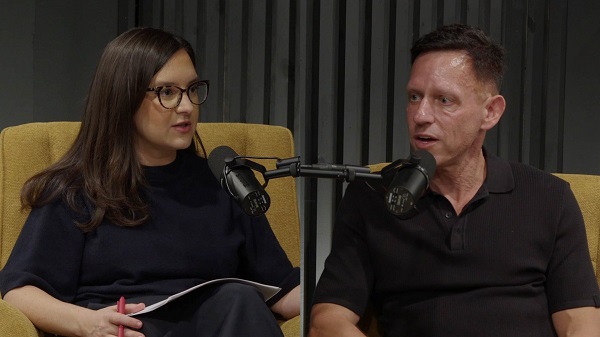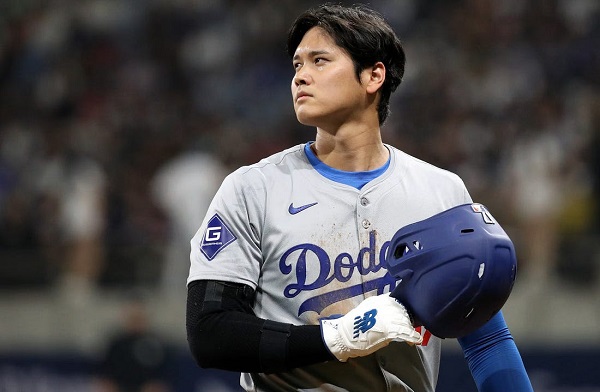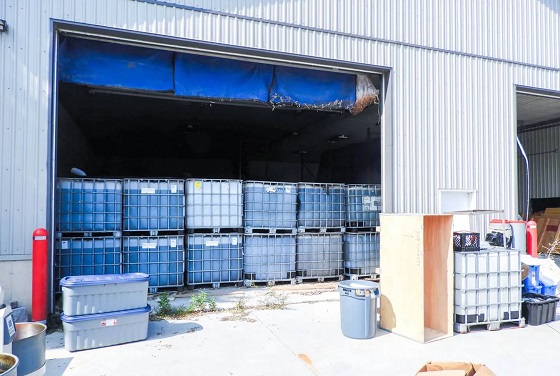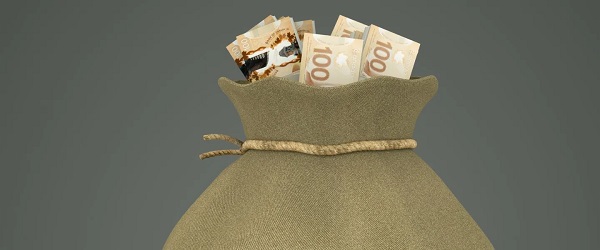Opinion
Peter Thiel: The Silicon Valley billionaire made big—and early—bets on Trump and J.D. Vance. What did he see that so many didn’t?

News release from The Free Press
Triumph of the Counter-Elites
|
On Tuesday night, Donald Trump announced that the richest man in the world, Elon Musk, along with the entrepreneur Vivek Ramaswamy, will head a new initiative in the Trump administration: the Department of Government Efficiency, or “DOGE.” Internet meme culture has now landed in the White House. Dogecoin is a memecoin—and if you don’t understand that sentence, fear not—I am sure Nellie will cover it in TGIF tomorrow. But what the announcement solidifies—if Trump’s win hadn’t already—is the triumph of the counter-elite. A bunch of oddball outsiders ran against an insular band of out-of-touch elites supported by every celebrity in Hollywood—and they won. They are about to reshape not just the government, but also the culture in ways we can’t imagine. How they did that—and why—is a question that I’ve been thinking about nonstop since Tuesday. And there was one person, more than any other, who I wanted to discuss it with. He is the vanguard of those antiestablishment counter-elites: Peter Thiel. If you listened to my last conversation with the billionaire venture capitalist a year and a half ago on Honestly, you’ll remember that Peter was the first person in Silicon Valley to publicly embrace Trump in 2016. That year, he gave a memorable speech at the Republican National Convention that many in his orbit thought was simply a step too far. He lost business at Y Combinator, the start-up incubator where he was a partner. Many prominent tech leaders criticized him publicly, like VC and Twitter investor Chris Sacca, who called Thiel’s endorsement of Trump “one of the most dangerous things” he had ever seen. A lot has changed since then. For one, Thiel has taken a step back from politics—at least publicly. He didn’t donate to Trump’s campaign. There was no big RNC speech this time around. But the bigger change is a cultural one: He’s no longer the pariah of Silicon Valley for supporting Trump. There’s Bill Ackman, Marc Andreessen, David Sacks, Shaun Maguire, and Elon Musk, among many other tech titans who have joined the Trump train. On the surface, Thiel seems full of contradictions. He is a libertarian who has found common cause with nationalists and populists. He invests in companies that have the ability to become monopolies, and yet Trump’s White House wants to break up Big Tech. He is a gay American immigrant, but he hates identity politics and the culture wars. He pays people to drop out of college, but still seems to venerate the Ivy League. But perhaps that’s the secret to his success. He’s beholden to no tribe but himself, no ideology but his own. And why wouldn’t you be when you make so many winning bets? From co-founding PayPal and the data analytics firm Palantir (which was used to find Osama bin Laden) to being the first outside investor in Facebook—Thiel’s investments in companies like LinkedIn, Palantir, and SpaceX have paid off, to say the least. His most recent bet—helping his mentee J.D. Vance get elected senator and then on the Trump ticket—seems also to have paid off. The next four years will determine just how high Thiel’s profit margin will be. On Honestly, Thiel explains why so many of his peers have finally come around to Trump; why he thinks Kamala—and liberalism more broadly—lost the election; why the Trump 2.0 team, with antiestablishment figures willing to rethink the system, will be better than last time. We talk about the rise of historical revisionism, the blurry line between skepticism and conspiracy, and his contrarian ideas about what we might face in a dreaded World War III. Click below to watch the full-length video.
Invite your friends and earn rewards |
Sports
While Ohtani marches into MLB history, Nippon league’s shame lingers

Only recently have foreign players been allowed to break sacred baseball records
In 1985, American baseball player Randy Bass was one run away from Sadaharu Oh’s single season record.
On the last game of the season he came up against the team managed by Oh. He was intentionally walked 4 times, and Oh maintained the record.
The truth is, for decades, foreign players were not allowed to break the sacred record held by Oh.
What Shohei Ohtani is doing today, for the Los Angeles Dodgers, would never have been allowed in Japan by a foreigner.
While cultural attitudes have shifted and foreign players have now broken some major records, there are still roster limits on the number of foreign players who can be on the active roster for a single game. Only four can be on the roster at any one time, although the team can sign as many as they want.
In 2001, American player Rhodes tied the single-season home run record of 55, but opposing pitchers consistently walked him instead of pitching to him.
Alex Cabrera, another American player, would later tie the record in 2002, and the controversy surrounding Oh’s management became a topic of heated discussion in the Japanese media.
All three players were deliberately sabotaged. Something that would never happen in Major League Baseball.
MLB would have its own shame, of course, by not allowing black baseball players into the league until 1947.
Jackie Robinson was the first African American player in MLB’s modern era, debuting on April 15, 1947, for the Brooklyn Dodgers.
Robinson experienced significant racism throughout his life, both before and during his baseball career.
He faced racial hostility from neighbors, discriminatory treatment in the military, and constant racial abuse, slurs, and physical attacks from opposing players and fans once he broke the colour barrier in the MLB.
Oh’s vaunted record would finally be allowed to fall in 2013, when Dutch baseball player Wladimir Balentien hit his 56th and 57th home runs to surpass Oh‘s previous mark of 55.
Balentien finished the season with 60 home runs, a record that remains in Nippon Professional Baseball (NPB) history.
Ohtani not only signed one of the biggest free-agent contracts in history — a 10-year, US $700 million deal with the Dodgers — recently he put on a historic show which stunned the sports world.
During Game 4 of the NLCS against Milwaukee Brewers, on the mound he fired 10 strikeouts over six complete innings, and slammed three home runs — one completely out of the park!
Dodgers teammate Freddie Freeman stared in disbelief with his hands atop his head as he watched the ball sail over the roof of the Right Field Pavilion and clear out of Dodger Stadium.
“Shohei, oh my God,” Freeman said on TBS after the game. “I’m still speechless.”
Ohtani became the seventh player to hit a home run out of Dodger Stadium, and just the second Dodgers player to do so, joining Mike Piazza (Sept. 21, 1997).
It also made the humble megastar the first pitcher in MLB history to hit a leadoff home run in either the regular season or the postseason, and the first home run by any Dodgers pitcher in postseason history.
The 5-1 pennant clinching victory would propel the Dodgers into the World Series, to face the Toronto Blue Jays.
There’s no question, he may be the greatest player who ever played the game.
Only Juan Soto signed to a bigger free agent contract, agreeing agreeing to a 15-year, $765 million deal with the New York Mets prior to the 2025 season.
Soto leads in career batting average and on-base percentage and has generated more runs, but he lacks Ohtani’s two-way dominance — the only player in modern baseball history to be a Cy Young-level pitcher while also being an elite hitter.
He is also a player whose otherworldly talents belie an impossibly down-to-earth persona.
The star two-way player played peacemaker this past season after he stopped his Dodgers teammates from hopping over the dugout railing and having a bench-clearing confrontation (again) with the San Diego Padres.
The drama occurred after Ohtani was hit by a pitch in what looked like a retaliatory move after Padres star Fernanto Tatis Jr. was drilled earlier in the inning, leading to the initial drama and both managers being ejected.
A quick thinking Ohtani immediately waved off the Dodger cavalry.
If that wasn’t enough, Shohei then went and spoke with the Padres dugout.
“He’s going over to the Padres dugout and he’s talking to them. And I guarantee you’re the Padres and you’re sitting there saying, ‘Oh, our bad, one of the Dodger television commentators said. “Those that watch this will talk about this for a long time when you try to explain how different Shohei Ohtani is.”
Meanwhile, what do foreign baseball players face in Japan?
- Housing and bureaucracy:It can be difficult to find housing, as some landlords are reluctant to rent to non-Japanese, and navigating bureaucracy can be complicated.
- Workplace culture:Some foreigners report experiencing intense competition at work, long hours, and strict workplace hierarchies.
- Cultural isolation:Some players report feeling like they are perpetually “othered,” or “gaijin” (foreigner), and may struggle with cultural differences and a sense of distance from both their home country and Japanese society. Players’ wives, also experience this sense of distance, and lacking interaction can suffer greatly from it. Engaging in social media, however, has helped in this regard.
- Prejudice and discrimination:Some individuals experience isolated incidents of prejudice, ignorance, or discrimination, such as being unfairly accused of wrongdoing.
- Intense training and schedules:Workloads and schedules can be demanding. For example, one player noted working in the mornings and then practicing from 1 p.m. to 7 p.m., with optional practice afterward. Full on game day practices are also mandatory. And if you are slated to play, you will play, regardless of any social events, including family funerals.
Makoto “Mac” Honda, an outfielder who played for the Chunichi Dragons, chose to play in the next scheduled game after his father’s death — an emotional moment in Japanese baseball history.
His story is a key part of the narrative in You Gotta Have Wa by Robert Whiting, a well-known book about Japanese baseball culture.
Contrary to the negatives, players report a high quality of life with low crime and good food. Japanese people are often polite and welcoming, especially toward tourists.
Some people are genuinely interested in learning about other cultures and may be very welcoming and inclusive of foreigners.
The presence of foreign players is also seen as beneficial for the development of sports in Japan, and many teams are embracing the modern world through foreign coaches and players.
In other words, it is changing.
To quote Seattle Mariners legend Ichiro Suzuki:
“The more that Japanese players go to the big leagues to play and succeed, the more that will serve to inspire young kids in Japan to want to become baseball players when they grow up.”
If you enjoyed this post, you can tell THE MAKICHUK REPORT that their writing is valuable by pledging a future subscription.
You won’t be charged unless they enable payments.
Crime
RCMP Bust Industrial-Scale Superlab Outside Toronto

A months-long RCMP investigation has led to the takedown of a massive synthetic-drug operation resembling the “super labs” often found in British Columbia — but this one was discovered just forty-five minutes north of Toronto. Officers uncovered an industrial-scale facility capable of producing millions of dollars’ worth of fentanyl, methamphetamine, MDMA, and GHB.
The RCMP’s Ontario Federal Policing unit announced Friday that search warrants executed on September 7 in Schomberg, northwest of Toronto, resulted in the seizure of nearly $10 million in suspected controlled substances, along with prohibited weapons, chemical precursors, and a range of illegal production equipment.
In addition to cash, drugs, and chemicals, officers discovered a pill press, firearms, handwritten drug “recipes,” flasks, chemical glassware, and other lab components. Approximately 20,000 litres of hazardous waste were also removed from the site.
Investigators say the probe began in spring 2025, when officers detected a suspicious bulk-chemical order placed by Christopher O’Quinn, operating under the business name O’Quinn Industries. “The chemicals ordered are known to police to be used in the production of fentanyl, MDMA, methamphetamine, and for cannabis extraction,” the RCMP said.
After weeks of surveillance, RCMP officers uncovered what they describe as a large-scale clandestine lab hidden on a Schomberg property. Dismantling the facility required coordination with the Ontario Fire Marshal, Health Canada, and municipal emergency services — a hazardous-materials operation that lasted ten days.
Three suspects — O’Quinn, Liang Xiong Guo, and Katie King — were arrested and face a combined 33 criminal charges.
O’Quinn faces 20 offences, including production and trafficking of Schedule I substances, possession of precursor chemicals, and multiple weapons violations involving a bullpup-style shotgun and a .22-calibre rifle.
Guo faces nine counts linked to the production and trafficking of methamphetamine and MDMA.
King faces four counts related to meth trafficking and illegal firearm possession.
RCMP officials said additional substances are undergoing Health Canada testing to determine whether synthetic opioids such as fentanyl were present.
Authorities also seized $8,000 in cash, multiple firearms, laboratory glassware, and chemicals capable of producing further drug batches valued in the millions.
“The complexity and danger of the operation required extensive inter-agency collaboration,” the RCMP said, thanking partners including the Ontario Provincial Police, Niagara Regional Police, York Regional Police, South Simcoe Police, the Ontario Fire Marshal, Health Canada, the Ministry of the Environment, and the Canada Border Services Agency.
Health Canada testing and court proceedings are ongoing.
-

 MAiD21 hours ago
MAiD21 hours agoDisabled Canadians increasingly under pressure to opt for euthanasia during routine doctor visits
-

 Alberta23 hours ago
Alberta23 hours agoPetition threatens independent school funding in Alberta
-

 Alberta2 days ago
Alberta2 days agoBusting five myths about the Alberta oil sands
-

 Courageous Discourse2 days ago
Courageous Discourse2 days agoNo Exit Wound – EITHER there was a very public “miracle” OR Charlie Kirk’s murder is not as it appears
-

 Business22 hours ago
Business22 hours agoCanada Revenue Agency found a way to hit “Worse Than Rock Bottom”
-

 Energy2 days ago
Energy2 days agoMinus Forty and the Myth of Easy Energy
-

 Digital ID20 hours ago
Digital ID20 hours agoToronto airport requests approval of ‘digital IDs’ for domestic airport travel
-

 Fraser Institute2 days ago
Fraser Institute2 days agoMétis will now get piece of ever-expanding payout pie








